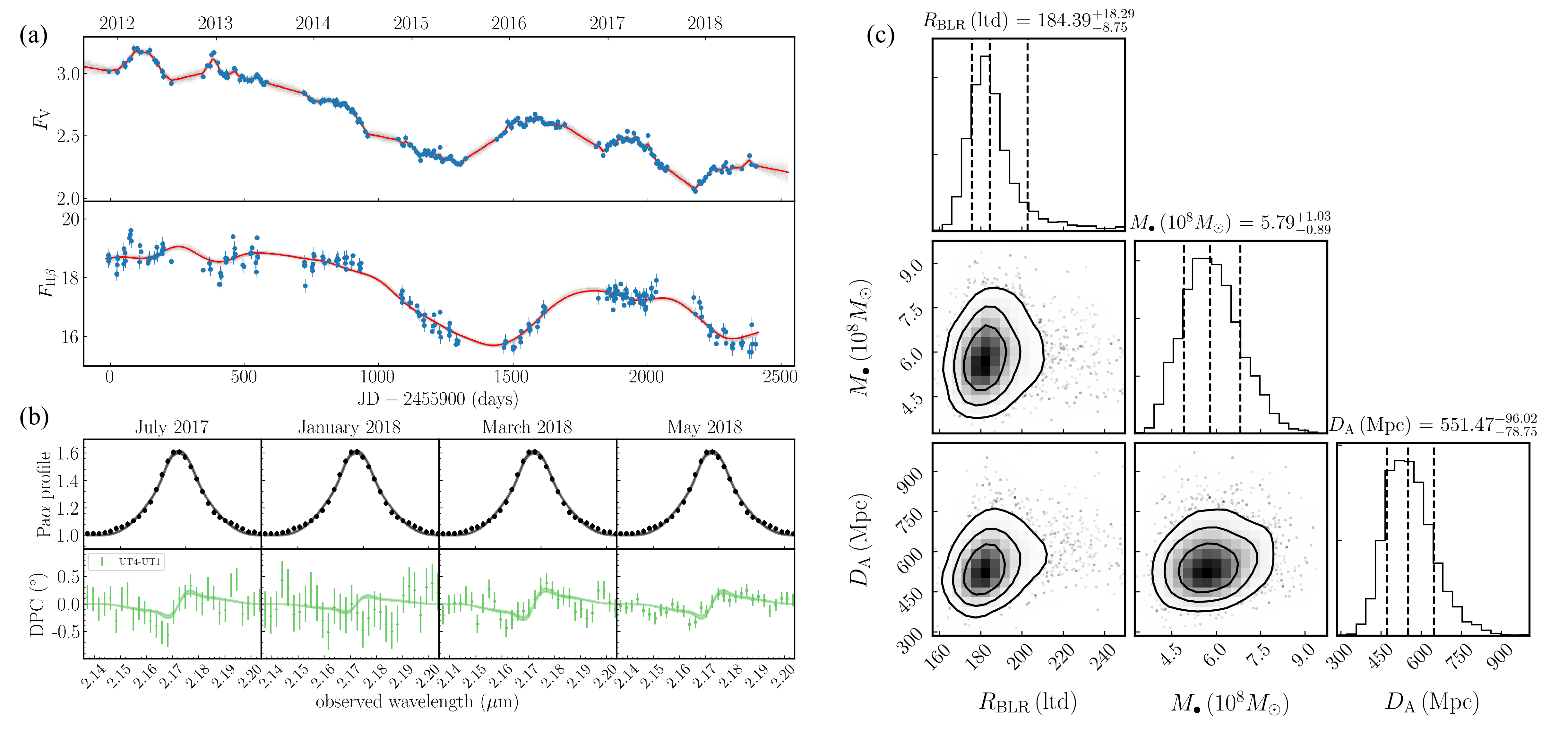Chinese Astronomers Measure Geometric Distance to Quasar 3C 273
Since the discovery of quasars more than half a century ago, measuring their distances has always been a fundamental problem for cosmology. Recently, a team led by Professor WANG Jianmin from the Institute of High Energy Physics of the Chinese Academy of Sciences (CAS) used a new geometric method developed by the team to successfully measure the cosmological distance to the first identified quasar 3C 273.
The method uses observations with extremely high angular resolution, which can only be achieved by an interferometer surmounting the Rayleigh diffraction limit. It represents a new way of precisely measuring the geometry of the universe and revealing its expansion rate and history – as described through the Hubble constant.
The research, entitled “A parallax distance to 3C 273 through spectroastrometry and reverberation mapping,” was published in Nature Astronomy on Jan. 13.
Astronomers have always sought to achieve ever sharper images in order to observe smaller and more distant objects. The groundbreaking Very Large Telescope Interferometer (VLTI) instrument GRAVITY, which was designed and built by astronomers at the European Southern Observatory (ESO) at a cost of nearly 100 million euros, achieves an amazing angular resolution of 10 μas in the near-infrared band (equivalent to that of a 130-meter telescope).
Since beginning operations in 2017, GRAVITY has yielded a series of results in the fields of exoplanets, the Galactic center, and gravitational microlensing, instantly expanding our knowledge about the universe.
From 2017 to 2018, the GRAVITY team successfully resolved the broad line region (BLR) of 3C 273, and measured its angular size as 46 μas, the first such measurement ever made of a quasar's BLR.
By determining the delay in the response of a broad emission line relative to driving continuum variations, the physical size of the BLR could then be obtained – a process known as reverberation mapping.
At the same time as the GRAVITY team was conducting its research, WANG's team used the Lijiang 2.4-meter telescope to conduct long-term spectroscopic monitoring of quasars to measure their black hole masses.
Upon publication of the GRAVITY team's results for 3C 273, Wang's team realized the complementarity of the two independent data sets: GRAVITY had observed the angular size of the BLR, while reverberation mapping could measure its physical size.
WANG's team then analyzed data from GRAVITY/VLTI interferometry and reverberation mapping to produce a direct measurement of the distance to 3C 273, thus also paving the way for resolving the “Hubble constant tension” – a discrepancy in the measure of the Hubble constant based on different measurement methods.
Through comprehensive modeling, Wang's team obtained an angular distance of ![]()
![]() . Using the single quasar, the statistical error of the Hubble constant measurement is a low 16%.
. Using the single quasar, the statistical error of the Hubble constant measurement is a low 16%.


(a)Results of fitting continuum and emission line light curves from the reverberation campaign; (b) Results of fitting profile and differential phase curves from GRAVITY observations; (c) Probability distribution of the distance to 3C 273, broad line region size, and black hole mass through fitting.
Currently, the two teams are coordinating observations to expand the sample. According to GRAVITY's present capability, there are about 50 targets suitable for similar joint reverberation mapping observations.
This research is supported by National Natural Science Foundation of China and the Ministry of Science and Technology of China.
Contact Information
Mr. Guo Lijun
ljguo@ihep.ac.cn